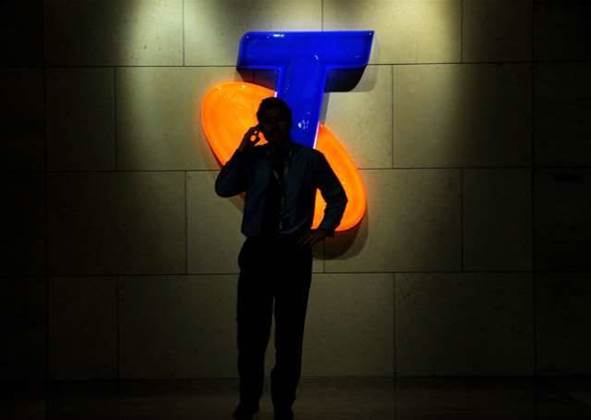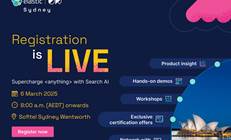Telstra is testing new ways to onboard and authenticate new consumer customers in a contactless manner that it believes will remain useful post-pandemic.

Lead product owner for consumer identity Natalie Reed told last week’s Identify 2020 virtual conference that the pilot is part of a broader piece of work that ultimately aims to give most of its 8 million consumer customers a digital identity in order to interact with the company.
That program of work, which is known as the ‘customer authentication at Telstra’ strategy, is three years old so far, and has resulted in 4.5 million of its 8 million consumer customers becoming registered and active users of the My Telstra app.
“About three years ago now, we undertook a full end-to-end view of our customer identity and authentication capabilities across Telstra, and that was looking at all of our channels so that was digital, stores and our contact centre,” Reed told Ping Identity’s Identify 2020 conference.
“What we did was actually look at our multitude of systems, how we'd implemented digital capabilities within each of those functions, and [concluded], ‘This is a nightmare, our customers have to navigate through 12 different systems, they've got different passwords for different things, they use different authentication measures’.
“So we came up with what we called our 'customer authentication at Telstra' strategy and took that to our board and our CEO.
“We're three years into that journey. It wasn't a small journey but it's been a fun one, and I think we've actually done some pretty big transformation with regards to how we register and keep our customers in all channels.”
Digital identity registration and management is now handled with Ping Identity products.
Reed said a new registration process was designed and deployed in March last year.
“We've had some really big success with regards to that, but it's still an after-the-fact registration so we still do have a really high dropout rate,” she noted.
However, Reed said that through Telstra’s recent digitalisation push - presumably it’s Telstra 2022 or T22 strategy - consumer customers are now being assigned a working digital identity as they sign up to consume Telstra services.
“We're going through a massive digitalisation program within Telstra which is looking at our end-to-end technology capability and saying ‘how can we make it more modern?',” she said.
“Part of moving to a new CRM [customer relationship management system] as well as a new identity platform has given us the ability to actually put registration or enrolment/digital onboarding into the sales flow, so we now enrol customers automatically for a digital credential where they walk out.
“Regardless of what channel they go in, so whether it's an assisted sale on the phone or I'm talking to a consultant in the store, it's the same journey, and they walk out with their device working, and with their My Telstra app enrolled and logged into.”
During the pandemic, the digital identity and authenticated access to My Telstra has been important for accessing online support, with some of Telstra’s more traditional channels like contact centre and in-store access more challenging.
“With employee stand-downs, we've had to really push that into a digital self-service capability, because we just didn't have the people with offshore contact centres to be able to take those calls,” Reed said.
“That's definitely been something that this journey that we've been on has absolutely enabled us to be able to push that through really quickly.
“Retrospectively, we could probably go back and put a really big dollar on that [customer authentication] business case.”
Evolving authentication
Reed said that customer authentication measures are evolving due to the pandemic, as well as generally due to changes in security best practices.
She said the telco is in the early stages of piloting ways to perform identity verification for vulnerable or geographically isolated customers remotely.
“In our assisted channels, particularly our stores when [they] closed down [due to the pandemic], we had a lot of people in vulnerable situations where we have to do identity verification [but] they don't have a primary verifiable form of identity,” Reed said.
“That's been one of the biggest shifts is the support from our executives and also our business around putting in solutions to do a digital onboarding piece in an assisted flow.
“We're now piloting a capability to do a biometric check of a non verifiable ID, so that we can onboard in a contactless environment.
“It is part digital, but it's assisted, so we guide them through the flow. It's very early stages, but the overall business sentiment is that post-Covid and post-lockdown, the capability is a really valuable thing for us to be able to offer to rural and regional Australians.
“We are a very big company with a lot of distance between stores.”
Reed also said the telco is “going down the multi-factor authentication (MFA) path”, something that customers with online Telstra accounts have sought for some time.
In the longer term, Reed said that password-less authentication is also on the telco’s roadmap, though she said it is unlikely that Telstra could go completely password-less.
“We've talked about password-less authentication. It's definitely on our roadmap. It is something that I think we would probably implement in our assisted channels before we implement it in our digital channels, because it actually helps with authentication, particularly in an anonymous assisted channel like contact centres,” she said.
“MFA challenges do [that] too, but sending things like QR codes in-store to a device that you can scan [are] all part of what we're thinking.”
However, Reed noted the telco’s more immediate challenge is getting more of its 8 million consumer base registered with a digital identity.
“I think for us, we just want all of our customers to actually have a digital credential first,” she said.
“We can't even think about password-less authentication if they don't have that.
“As I said, we have 4.5 million registered, we've got an 8 million consumer customer base, so we're only 55 percent in there.”
Reed said that authentication method changes pushed by the likes of Apple could drive changes in the way Telstra authenticated the identity of its customers in the future.
“Apple really drives the consumer uptake of these things - Touch ID and Face ID are things that consumers understand,” she said.
However, Reed added that Telstra would still need to have a fallback option, particularly for vulnerable customers.
“You always have to have a fallback and as soon as you have a fallback then I don't think we're ever going to truly be password-less because what is the actual fallback for people who are vulnerable, who can't use a phone or screen readers, and can't do certain things?” she said.
“Every single one of our organisations will always have to design an exception process.
“Part of that is for regulatory reasons, [but the other] part of it is just responsible business.”


.png&h=140&w=231&c=1&s=0)

.png&w=100&c=1&s=0)
_page-0001.jpg&w=100&c=1&s=0)
.png&w=100&c=1&s=0)


.png&w=120&c=1&s=0) Tech in Gov 2025
Tech in Gov 2025
 Forrester's Technology & Innovation Summit APAC 2025
Forrester's Technology & Innovation Summit APAC 2025
.png&w=120&c=1&s=0) Security Exhibition & Conference 2025
Security Exhibition & Conference 2025
 Integrate Expo 2025
Integrate Expo 2025
 Digital As Usual Cybersecurity Roadshow: Brisbane edition
Digital As Usual Cybersecurity Roadshow: Brisbane edition







.jpg&h=271&w=480&c=1&s=1)



.jpg&h=140&w=231&c=1&s=0)



